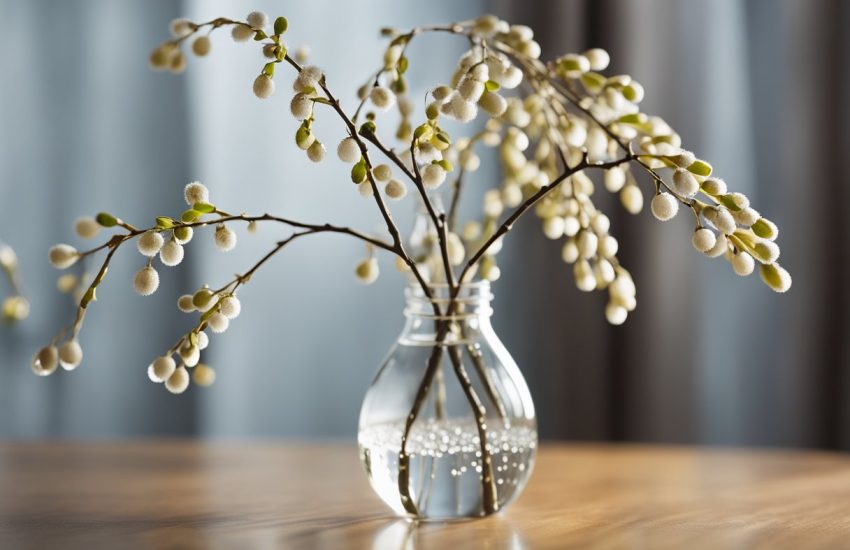Shade Loving Ground Covers Pennsylvania: Best Plants for Shady Lawns and Gardens
Lots of Pennsylvania gardeners run into trouble when they’re looking for ground covers that actually thrive in the shade and help prevent soil erosion. Shade-loving ground covers fill in those stubborn bare spots where grass just refuses to grow.
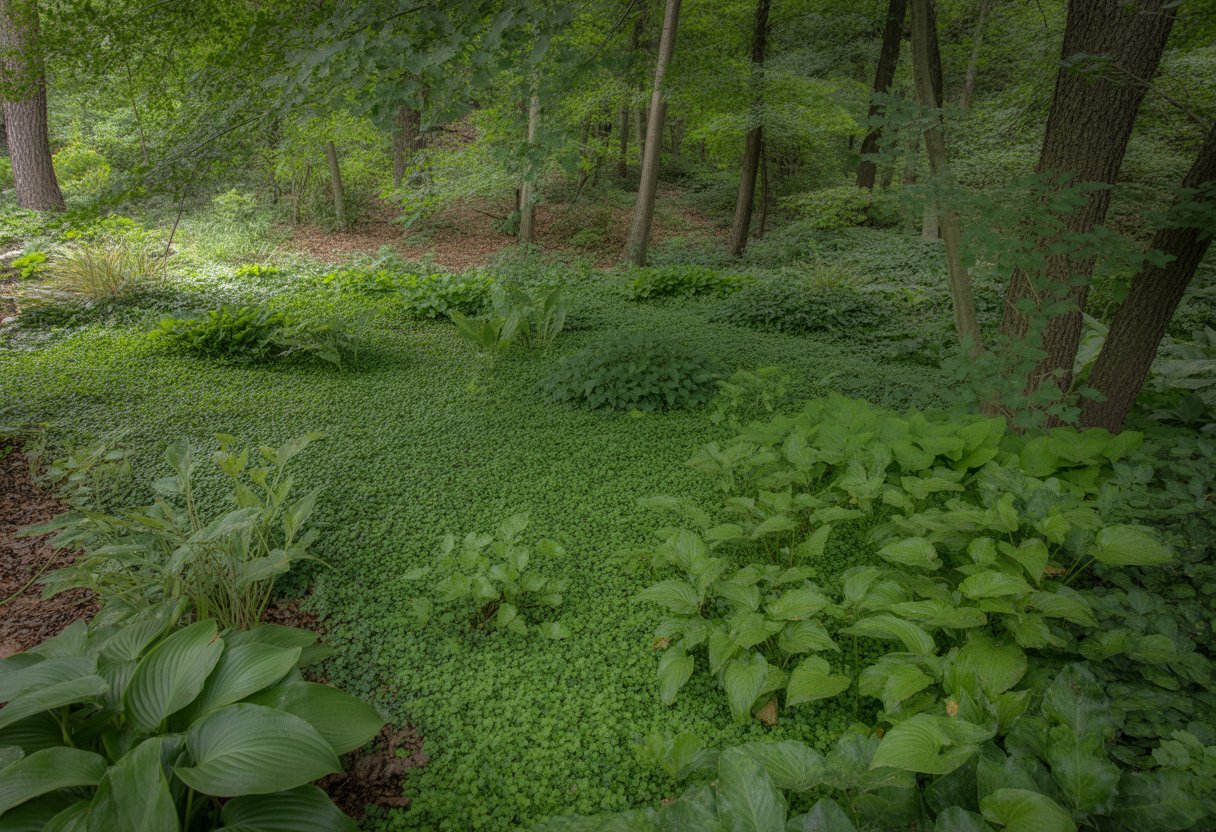
Some of the most reliable shade-tolerant ground covers in Pennsylvania are pachysandra, creeping vinca, and wild ginger. They handle low-light conditions with ease. These plants tend to be hardy, need very little maintenance, and create a lush, green carpet beneath trees or in those shady garden corners.
Picking the right ground cover depends on your soil, how wet things get, and just how much shade you’re dealing with. Knowing your options makes it a lot easier to get healthy, attractive ground cover established in Pennsylvania’s shadier spots.
Understanding Shade Loving Ground Covers in Pennsylvania
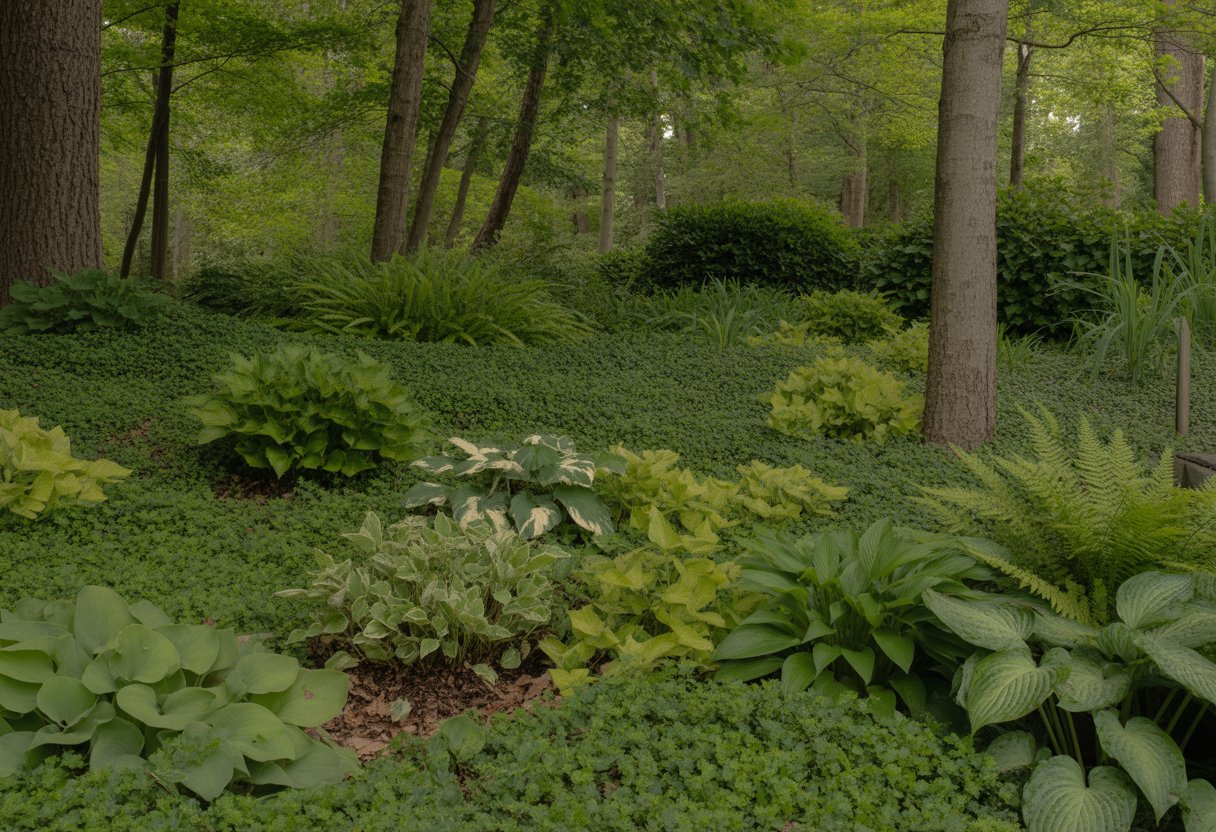
When you pick groundcovers for shade, you need to pay attention to plant traits, soil, and the local climate. It’s really about finding what works for your landscape. Shade-tolerant groundcovers help control erosion, block out weeds, and make the whole scene look better.
What Makes a Groundcover Shade Tolerant
Shade tolerance comes down to how well a plant can photosynthesize with less sunlight. Plants with bigger, thinner leaves or those that evolved in forest understories usually do better. They often grow slowly and don’t need as much water as sun-lovers.
Most shade-tolerant groundcovers actually like filtered or dappled sunlight more than deep, heavy shade. Pachysandra terminalis and Vinca minor are classic picks—they’re evergreen and really dense. These plants keep their chlorophyll going even when light is limited.
To survive in shade, plants also have to deal with extra moisture and the fungal diseases that come with it. Leaf structure and root adaptations help them stay healthy under trees or close to buildings.
Climate and Soil Considerations in Pennsylvania
Pennsylvania’s humid continental climate means cold winters and warm, sticky summers. Shade-loving groundcovers need to handle those temperature swings and a growing season that’s around 160 days. Depending on where you are, you’ll be in hardiness zones 5a to 7a, which affects your plant choices.
The soil here runs the gamut—clay, loam, sand. Most groundcovers for shade want well-drained, slightly acidic to neutral soil (pH 5.5 to 7). Many native groundcovers are already tuned to local soils, so they tend to do better.
Shade slows down drying, so wet soil can be a problem. You’ll want groundcovers that don’t mind moist roots but won’t rot. Mulch helps keep moisture steady and protects roots through winter.
Benefits of Using Shade Loving Ground Covers
Shade-loving groundcovers work way better than grass in low-light spots. Their roots hold soil in place and fight erosion, which really matters on Pennsylvania’s hills and slopes.
They crowd out weeds by forming a thick canopy, so there’s less space and light for invaders. Native picks like Wild Ginger or Creeping Phlox also help pollinators and good bugs thrive.
You get year-round coverage with barely any mowing or watering. Shade groundcovers can turn those sad, bare patches into lush garden spaces. Native species usually mean less work and more sustainability.
Top Shade Loving Ground Covers for Pennsylvania Gardens

Plenty of ground covers handle Pennsylvania’s shade and shifting moisture levels. They tackle erosion, block weeds, and add a bit of texture and color under trees and shrubs.
Pennsylvania Sedge
Pennsylvania sedge (Carex pensylvanica) is a native, grass-like ground cover that loves shady spots. It likes well-drained, slightly acidic soils—think Pennsylvania woodlands. This sedge forms dense mats with fine, arching green leaves that turn golden in fall, so you get some seasonal flair.
It spreads slowly through rhizomes, so you don’t have to fuss over it. It’s great for erosion control and handles dry shade under big trees better than most. It grows about 6–12 inches tall and doesn’t need mowing.
Sweet Woodruff
Sweet woodruff (Galium odoratum) fits right into moist, shady spots with rich, well-drained soil. Its whorled, lance-shaped leaves and small white flowers in spring give off a gentle scent. This perennial spreads into a dense carpet, perfect for big shady patches.
Its bright green leaves really perk up darker corners. Sweet woodruff dies back in the summer heat but comes back by reseeding. Deer and rabbits usually leave it alone, which is a plus if you’ve got wildlife roaming around.
Ferns
Ferns like Christmas fern (Polystichum acrostichoides) and lady fern (Athyrium filix-femina) do well as ground covers in Pennsylvania shade. They love moist, acidic, well-drained soils—the kind you find in eastern forests.
Their green, finely textured fronds look great all year or at least most of it, depending on the species. Ferns spread through underground rhizomes and naturally fill in under trees. They’re low-maintenance and deer don’t bother them much.
Liriope spicata
Liriope spicata, or creeping lilyturf, is an evergreen ground cover that handles anything from moderate to full shade. It likes moist, well-drained soil but can take drought and clay, too.
Liriope spicata forms thick mats of grasslike leaves, growing 6–10 inches tall. You’ll see small purple flower spikes in late summer, then black berries. It spreads fast via rhizomes, so it covers ground quickly, but you’ll need to keep it in check or it’ll take over.
Evergreen and Low Maintenance Varieties
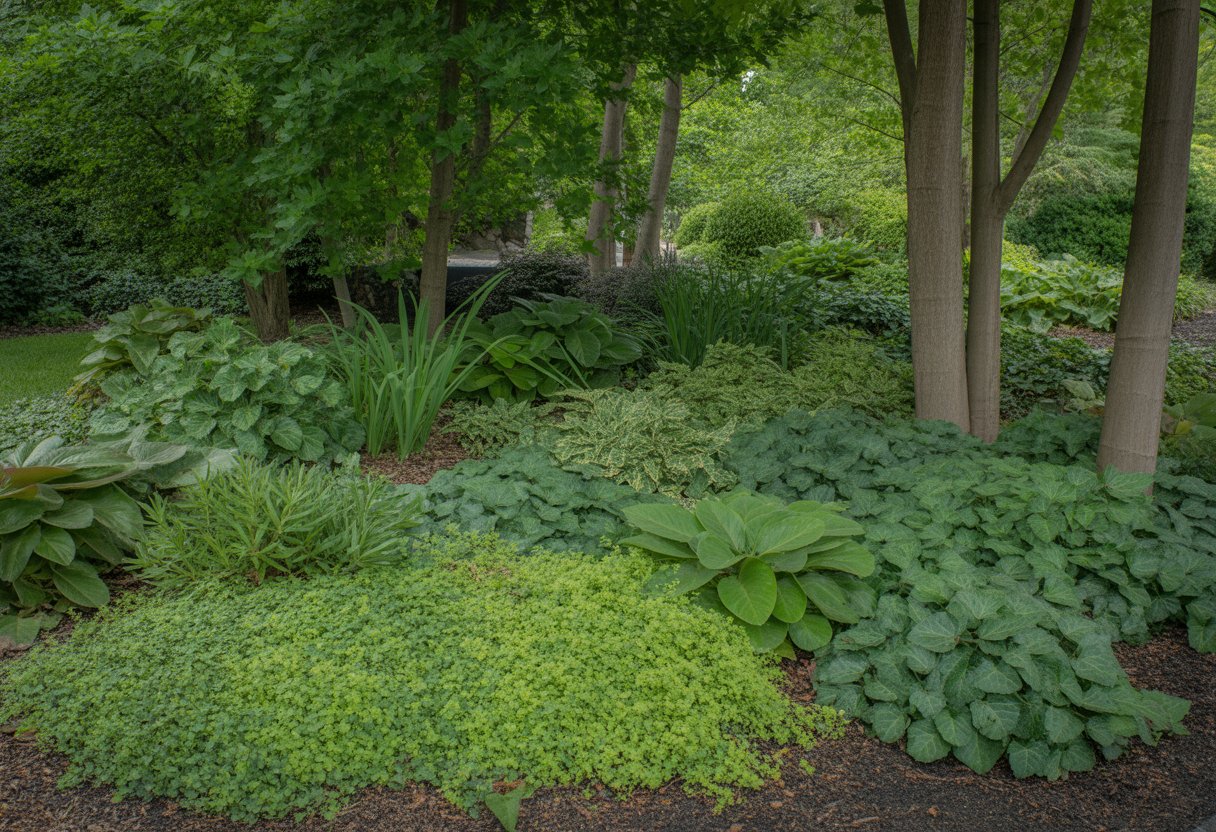
Evergreen shade groundcovers give you green all year with barely any hassle. Some are super reliable and don’t need much trimming or replanting, which is perfect for Pennsylvania’s shade. A few even shrug off pests and deal with different soils.
Evergreen Groundcover Options
You’ve got a few evergreen groundcovers that really shine in Pennsylvania shade. Pachysandra terminalis is a classic—thick, glossy leaves and it spreads fast. You can even walk on it a bit and just trim it occasionally.
Vinca minor (periwinkle) grows quickly and puts out small blue or purple flowers in spring. It handles poor soils and keeps slopes from washing away.
Liriope spicata is another evergreen choice with grassy leaves and purple flower spikes in season. It’s better than many at handling dry shade.
These plants keep things looking tidy and green even in winter.
Mondo Grass as a Shade Solution
Mondo grass (Ophiopogon japonicus) works for shaded spots that need a tough, evergreen cover. It grows in low clumps of dark green, blade-like leaves and usually stays 6-12 inches tall.
It likes well-drained, humus-rich soil, but once it’s settled in, it can handle some drought. Mondo grass spreads slowly, so it’s less likely to take over.
It doesn’t flower or seed much, so you won’t have to fuss with it. Plus, deer ignore it and it can handle city pollution, so it fits a lot of situations.
Care and Maintenance Tips
Most evergreen groundcovers just need some attention when you first plant them. Give them a good soak during that first season to get roots established.
Mulch helps hold in moisture and keeps weeds down. Don’t go crazy with pruning—just pull out dead leaves now and then to tidy up.
Keep an eye out for pests like scale insects or fungi, but honestly, if your plants are healthy, you probably won’t have to worry. Skip heavy fertilizer so you don’t end up with floppy, weak growth.
Check things over every so often to catch bare patches or problems early.
Designing and Planting a Shade Garden with Ground Covers
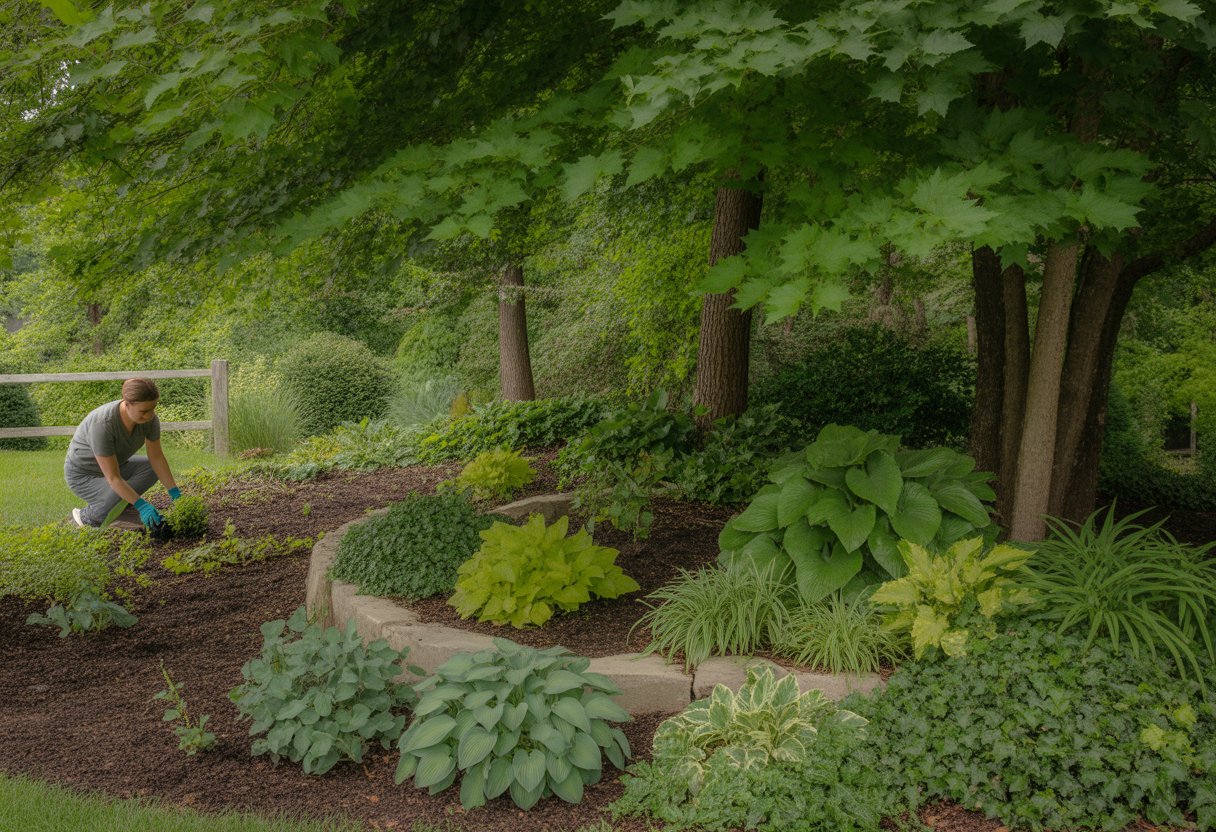
If you plan things out, you can build a shade garden that actually works and looks good—especially if you pick groundcovers that suit Pennsylvania’s quirks. It’s about picking plants that play well together and making sure the soil stays put.
Combining Ground Covers for Visual Interest
Mixing different groundcovers adds texture, height, and color contrast to shady spots. Try pairing Epimedium with Solomon’s Seal for a mix of leaf shapes and shades of green. Native picks like Virginia Bluebells or Wild Ginger bring in seasonal pops and help local wildlife.
Plant in clusters or loose drifts instead of neat rows—it looks more natural. Use a mix of evergreen and deciduous groundcovers for year-round coverage. On slopes or under trees, layering plants of different heights gives depth without making things crowded.
Erosion Control and Mulching Strategies
Groundcovers do a lot for erosion control, especially on slopes or tough, compacted soil in shady gardens.
Dense, spreading plants like Pachysandra or Ajuga really help stabilize soil. They form a thick mat that cuts down on runoff and keeps soil in place.
Mulching with organic stuff—think shredded leaves or bark—works alongside groundcovers. It keeps moisture in and weeds out.
You’ll want to spread mulch in a 2-3 inch layer, but steer clear of piling it right up against plant crowns. That can cause rot, which nobody wants.
Check your mulch every so often to make sure it’s still doing its job and not smothering any young plants. Sometimes, a little maintenance goes a long way.

